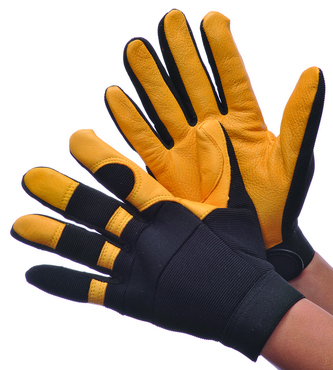|
|
CLICK THE PICTURE ,THEN CLICK GLOVES OR VESTS!
FYI Alternatives To LatexAlternatives To Latex: Nitrile and PVC/Vinyl Due to the volatile latex market, many controlled environment operators and managers are beginning to ask a very important question: Why latex? Latex has long been the go-to glove for life sciences cleanrooms, but many are now exploring alternatives including vinyl/PVC and nitrile. First, a simple answer to the above question: Habit. For many cleanrooms, latex is the glove of choice simply because they have always used latex and are not aware that there are other options. When latex gloves were introduced to the medical industry in the 1960s, they were a more comfortable choice over the standard controlled environment glove material at the time, vinyl. However, in the 60 years since latex became operators’ preferred glove material, much headway has been made in the processing of vinyl gloves; as well, nitrile gloves were introduced in the early 1990s.
Latex ConsDespite the changes to the glove industry and the recent rising cost of latex, cleanrooms continue to use latex gloves. But cleanroom operators should reconsider whether or not latex is actually the best material choice for the application. Some cons to latex gloves in the cleanroom: • Latex is not ESD compliant. The material, when rubbed against itself, creates a triboelectric effect (also referred to as a tribo effect or triboelectic charging). This means it creates an electric charge, and makes the material unsuitable for electronics applications. • Latex is an organic material. This means that not only can allergies be developed by prolonged use of latex gloves, but that it can potentially generate more particles than a synthetic material like nitrile or PVC. Furthermore, as an organic material, its quality is more inconsistent than synthetic/inorganic material gloves. • The processing of latex gloves is a dirtier procedure, when compared to similar processes for other glove materials. This means a less consistent glove product when compared to nitrile or vinyl. • Latex is less conforming to operator hands than alternatives like stretch-vinyl and nitrile. Latex gloves are more likely to cause operator hand fatigue as workers are constantly “fighting” the material’s ability to “pop” back to its ambidextrous, straight-fingered shape. • Latex gloves can outgas. Outgassing happens when a solid releases gas (also called offgassing), and, due to its more porous nature, latex can release any chlorine gas that did not fully wash out during the manufacturing process.
Alternatives:The Cold War era and the “Space Race” – the dawn of the cleanroom and controlled environment industry – created a need for a clean, ESD-compliant barrier between the operator and the product being handled, and vinyl fit the bill. But as the life sciences side of the industry begun to grow, operators opted for latex gloves as they were more comfortable than the vinyl gloves on the market at the time. However, since then, advancements have been made to improve the shape and fit of PVC gloves. In fact, stretch-PVC is more supple and more elastic than latex. Furthermore, the thinner the glove material, the more the cost goes down (raw material accounts for 55 percent of glove cost) and dexterity improves. Introduced in the 1990s, nitrile is a synthetic rubber that is ESD compliant and boasts an elasticity range of 500 to 600 percent, making it the most comfortable disposable glove option. Its synthetic substrate gives it more consistent quality than latex, which has an organic substrate. It also provides superior barrier protection. [Publish Date: January 2011] |
||||||||||||||
Enter supporting content here




